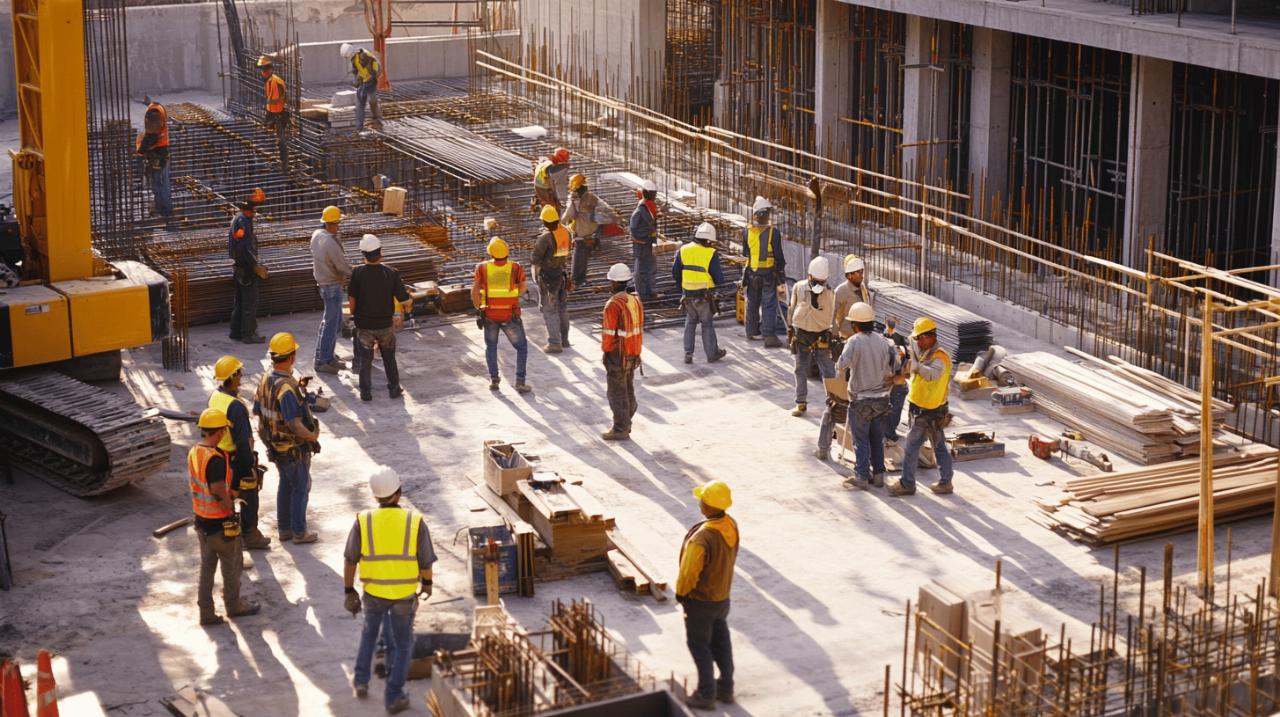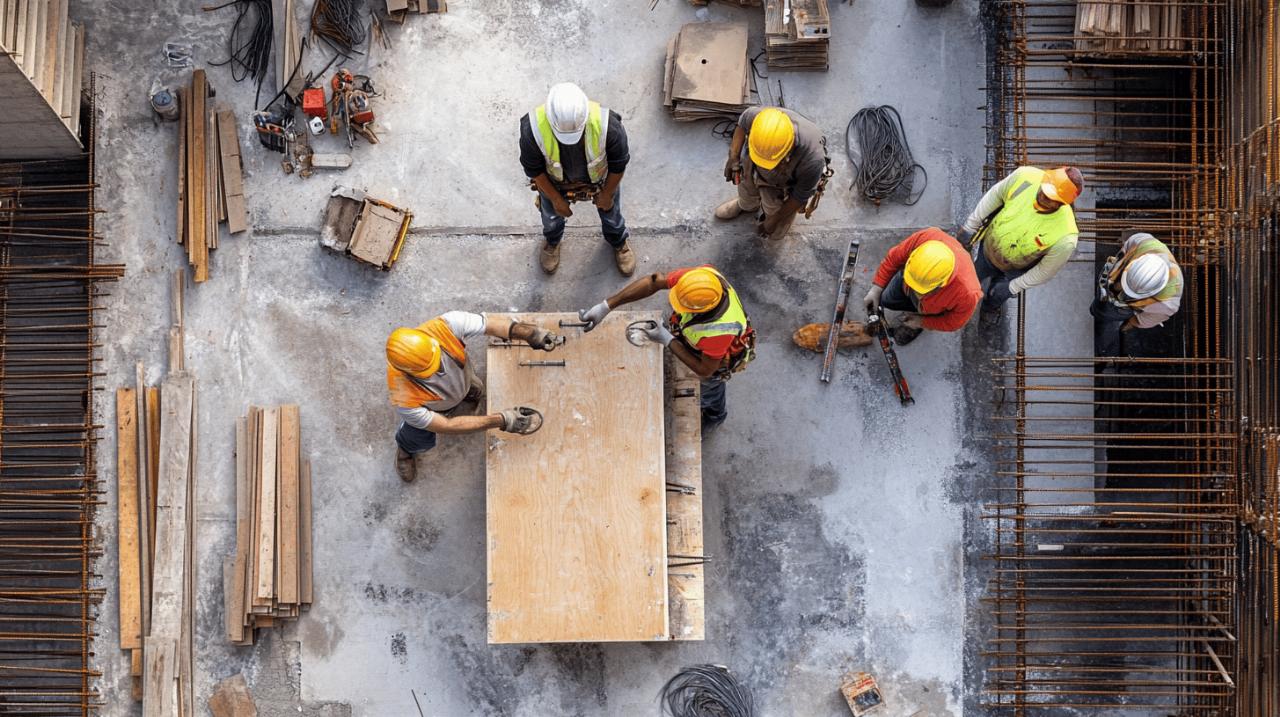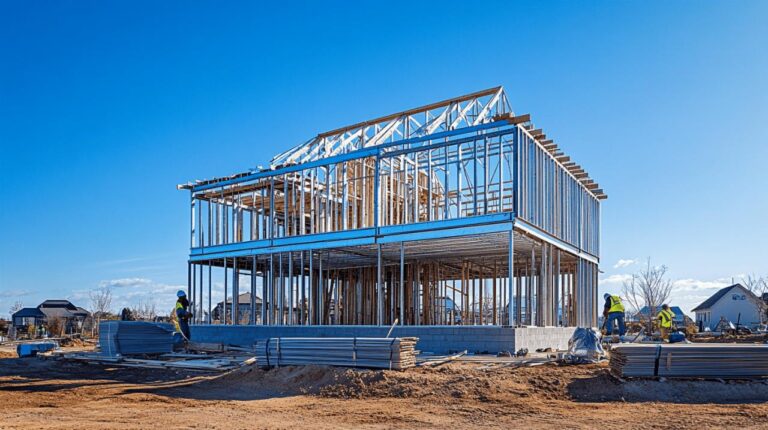
The construction industry stands as one of the most dynamic and diverse sectors within the United Kingdom economy, bringing together an array of skilled professionals whose expertise transforms architectural plans into tangible structures. From the moment a project begins with earthmoving and site preparation through to the final connection of power systems, each phase relies upon the specialised knowledge of dedicated tradespeople. Understanding the various building trades not only illuminates the complexity of modern construction but also highlights the remarkable career opportunities available for those drawn to hands-on, rewarding work that shapes the very landscape of our communities.
Foundation and Structural Trades: The Backbone of Every Build
Groundworks: Preparing the Site for Construction Success
Before any structure can rise from the earth, groundworkers perform the essential task of preparing the site, ensuring that what follows has a solid foundation upon which to rest. These professionals undertake excavation work, lay drainage systems, and establish the initial levels that will determine the success of the entire project. Construction craft labourers often support these efforts, assisting tradespeople across commercial, highway, underground, and industrial categories. Their work involves clearing away debris, moving materials, and ensuring that the site remains safe and organised throughout the early stages. The role demands physical stamina and a keen understanding of safety protocols, as groundworks set the stage for everything that follows. Without their meticulous attention to detail, subsequent trades would face considerable challenges, making groundworkers truly the unsung heroes of any building project.
Bricklaying and Masonry: Building the Framework Block by Block
Once the groundworks are complete, bricklayers and masonry specialists step in to construct the structural framework that defines the building's form. Bricklaying involves the precise placement of bricks to create walls, arches, and other structural elements, requiring both physical dexterity and an eye for alignment. These skilled workers must understand different types of mortar, bonding patterns, and the properties of various masonry materials. Restoration workers within this trade also repair and refurbish older structures, preserving architectural heritage whilst ensuring modern safety standards. Cement masons complement this work by finishing concrete surfaces, smoothing and shaping the material to create durable floors and pathways. Together, these trades form the visible skeleton of a building, providing strength and structure that will endure for decades. The craftsmanship involved in bricklaying and masonry cannot be understated, as even minor errors can compromise the integrity of the entire structure.
Specialist trades: carpentry, joinery, and finishing work
Carpentry and Joinery: Crafting Structural and Aesthetic Timber Elements
Carpenters bring wood to life within a building, constructing, installing, and repairing structures that range from load-bearing frameworks to intricate decorative features. This trade offers opportunities for specialisation, whether in rough carpentry, framing carpentry, or finish carpentry, each requiring distinct skills and techniques. Those focusing on rough carpentry typically work on the structural elements, erecting building frames and installing joists and beams. Framing carpenters concentrate on the skeletal structure, whilst finish carpenters handle the more detailed work, such as skirting boards, architraves, and custom cabinetry. Some carpenters further specialise as floor layers, installing hardwood, laminate, or other flooring materials with precision. Others work as lathers, installing the metal or wooden framework that supports plasterwork. The versatility of carpentry makes it one of the most essential trades in construction, bridging the gap between raw materials and refined interiors. Millwrights, though less common in residential projects, install and repair heavy machinery and related systems, applying similar principles of precision and structural understanding.
Plastering, Roofing, and Decorating: Bringing Polish and Protection
Once the structural elements are in place, plasterers step in to finish interior walls and ceilings, applying layers of plaster to create smooth surfaces ready for decoration. These skilled workers also apply stucco to exteriors and soundproof buildings, ensuring both aesthetic appeal and functional comfort. Drywall finishers and tapers apply compounds to prepare walls, smoothing joints and imperfections before painting begins. Roofers and waterproofing specialists protect structures from the elements, installing various roofing materials on commercial and residential buildings. Their work is critical, as a poorly installed roof can lead to water damage and structural deterioration. Painters and decorators add the final touches, preparing surfaces and applying finishes that enhance the visual appeal of the space. Sheet metal workers fabricate, install, and maintain metal products used in building cladding and ductwork, often working closely with roofers. Tile, marble, and terrazzo masons construct decorative and functional surfaces, using traditional techniques to create stunning floors and walls. These finishing trades transform a bare structure into a polished, inviting space, combining technical skill with artistic sensibility.
Essential services: plumbing and electrical installation
Plumbing systems: ensuring safe and reliable water supply
 Plumbers install and maintain the systems that provide clean water and remove waste, playing a vital role in the health and safety of any building. Their work encompasses fitting pipes, installing fixtures such as sinks and toilets, and ensuring that drainage systems function correctly. Pipefitters, refrigeration, and air conditioning service specialists install high and low-pressure pipes, often working on complex systems that regulate temperature and air quality. Sprinkler fitters focus on fire suppression systems, installing equipment that can save lives in the event of a blaze. The plumbing trade requires a thorough understanding of building codes and regulations, as well as the ability to troubleshoot and repair systems under pressure. Entering this field typically involves completing an apprenticeship lasting between two and five years, combining classroom learning with on-the-job training. Continuing education remains important to keep pace with new technologies and materials, ensuring that plumbers can adapt to evolving industry standards. The rewards include job security and competitive salaries, reflecting the essential nature of their work.
Plumbers install and maintain the systems that provide clean water and remove waste, playing a vital role in the health and safety of any building. Their work encompasses fitting pipes, installing fixtures such as sinks and toilets, and ensuring that drainage systems function correctly. Pipefitters, refrigeration, and air conditioning service specialists install high and low-pressure pipes, often working on complex systems that regulate temperature and air quality. Sprinkler fitters focus on fire suppression systems, installing equipment that can save lives in the event of a blaze. The plumbing trade requires a thorough understanding of building codes and regulations, as well as the ability to troubleshoot and repair systems under pressure. Entering this field typically involves completing an apprenticeship lasting between two and five years, combining classroom learning with on-the-job training. Continuing education remains important to keep pace with new technologies and materials, ensuring that plumbers can adapt to evolving industry standards. The rewards include job security and competitive salaries, reflecting the essential nature of their work.
Electrical Installation and Power Systems: Wiring for Safety and Functionality
Electricians install, maintain, and repair electrical systems, ensuring that buildings have a safe and reliable supply of power. Their responsibilities range from wiring new constructions to upgrading existing systems and troubleshooting faults. Electrical workers test components and systems to verify that they meet safety standards, often working closely with other trades to coordinate installations. Elevator constructors, a specialised branch of electrical work, install, repair, and maintain elevators and related equipment, requiring both electrical expertise and mechanical knowledge. Entering the electrical trade typically requires a high school diploma or equivalent, along with an apprenticeship that provides hands-on experience under the supervision of licensed professionals. Some regions also mandate licensing or certification, ensuring that electricians possess the necessary skills and knowledge. The trade offers significant career opportunities, with pathways to becoming a master electrician or moving into construction management. Safety risks are inherent in electrical work, making adherence to protocols and continuing education essential for minimising hazards.
Project Management and the Broader Construction Landscape
Site Management and Coordination: Keeping the Build on Track
Overseeing the myriad trades on a construction site requires a foreman or site manager, the individual responsible for coordinating activities and ensuring that projects progress smoothly. These managers maintain records of work completed, manage the workforce, and ensure that all work meets the required standards. They serve as the bridge between tradespeople and project stakeholders, addressing challenges as they arise and keeping everyone informed. Construction management software, such as Wunderbuild, optimises scheduling and project tracking, helping managers allocate resources efficiently and monitor progress in real time. Effective site management reduces delays, minimises costs, and ensures that safety protocols are followed rigorously. The role demands excellent communication skills, a deep understanding of construction processes, and the ability to make quick decisions under pressure. For those with experience in the trades, moving into site management represents a natural career progression, offering leadership opportunities and increased responsibility.
Renovation and Public Works: Adapting Skills for Diverse Projects
Not all construction work involves erecting new structures; renovation projects form a substantial part of the industry, requiring tradespeople to adapt their skills to existing buildings. These projects can range from minor updates to complete refurbishments, demanding a high degree of versatility and problem-solving ability. Asbestos abatement workers handle hazardous materials, trained to safely remove asbestos, lead, and other harmful substances from older buildings. Glaziers and glassworkers install glass and aluminium components, often replacing outdated windows and doors in renovation projects. Heat and frost insulators apply insulation to pipes and tanks, improving energy efficiency in both new and refurbished buildings. Iron workers assemble and install iron sections, specialising in structural, ornamental, reinforcing, or rigging work, often contributing to large-scale infrastructure projects. Public works projects, such as schools, hospitals, and roads, rely on the expertise of these trades to maintain and improve essential infrastructure. Operating engineers operate and maintain heavy construction equipment, ensuring that earthmoving and material handling proceed efficiently. Teamsters organise workers across various occupations, supporting the broader construction ecosystem. The diversity of projects within the industry ensures that skilled tradespeople remain in demand, with opportunities to work on everything from heritage restoration to cutting-edge public facilities.





